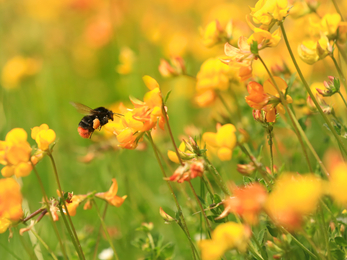A new report published today - commissioned by The Wildlife Trusts, RSPB and WWF - highlights big gaps in environmental protections post-EU Exit and argues that a new system of regulation is needed to maintain and improve farming and environmental standards.
The Agriculture Bill, which will be debated in the House of Commons on Monday 3rd February, presents a welcome transformative vision for agriculture in which payments will be made to farmers to tackle the climate and nature crisis. However, it misses the need to improve the way Government will ensure farmers meet minimum environmental standards post-EU Exit. This puts the natural world – from hedgerows and soils, to ponds and the wildlife that depends on them, at risk.
The three wildlife charities are calling on the Government to close the gaps in regulation and include a power in the Agriculture Bill to introduce and enforce a new regulatory framework for agriculture which addresses the gaps.




